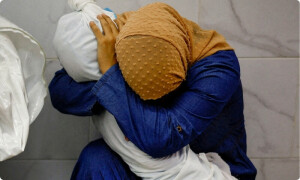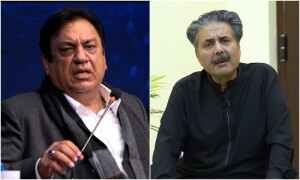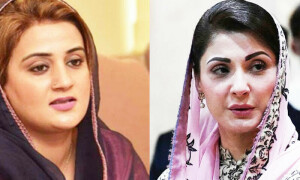
KARACHI: What will Karachi look like in the post-coronavirus world? What changes will or should its urban infrastructure undergo? And have we learnt anything from this crisis? These are some of the questions that are frequently being asked by those who study or are interested in the socio-physical development of the city by the sea.
Architect and town planner Arif Hasan said: “It is difficult to say what’s going to happen. I think world powers are trying to bring the old world back in a new form. That has already started. It will all depend on for how long this [coronavirus] situation lasts. If it goes on for a long period, a new world has to be built. And there will be joblessness and poverty. They will have to figure out how to deal with it.
“As far as heritage is concerned, it will take a back seat. If this goes on for a longish stretch then people will come into and go from the cities. Those who are without families will leave the cities. The urban environment will have unemployment and industries will be closed,” Mr Hasan said.
Comparing the situation that Karachi faced due to the bubonic plague in the 1890s with today’s virus-hit scenario, he said: “It was a different time. Population was less, there was no industrial labour and despite the halt to construction work heavy investments were made. Nowadays, the population is huge. Again, if this continues for a while, we will have to reorganise the city.”
‘There will be joblessness and poverty; they will have to figure out how to deal with it’
Architect Yasmeen Lari said: “First of all, we have learnt that not everyone has to go to their office, therefore, there’s no need for concentration. We have the example of New York. What’s happening there is the result of over-densification. On the other hand, we hear the government announce that there will be multistorey towers.”
Ms Lari argued: “People should be allowed to work from home(s). It’s a good opportunity for women as well. A lot of women don’t work; we can be productive by staying at home. We have also learnt that we need to think about the poor, the underprivileged and give them the same facilities which the affluent have (such as housing societies). If we want them to wash their hands on a regular basis, they need to have clean water for it. This class difference should end.
“We must remind ourselves that in our old cities, such as Lahore and Multan, they used to have sahan in houses. This is the kind of methodology that we need. Densification is not what we need. People are losing their marbles living in flats. There should be open spaces in houses. And, we need to protect our heritage,” Ms Lari said.
Architect Noman Ahmed said: “The situation will allow the government to mull over social and cultural infrastructures where the funding was nothing to write home about. The funding will increase. Then it has also exposed the shortcomings at district hospitals, so the authorities will pay attention to that sector as well.
“An important area that has come to light is the one which on surface doesn’t have much to do with healthcare emergency, for example, Expo Centre, which is being used in the front lines of the fight against the virus. Such appraisals will be helpful,” he said.
Dr Ahmed with reference to heritage buildings pointed out that this is the time to develop a case or argument that those structures which are in disuse can be put to good use if such emergencies rear their heads.
Expanding on the learning curve, Ms Lari added that Covid-19 has given us the opportunity to expand networks of landscaped walking streets for improved living conditions. We should now be able to reroute vehicles for reducing densification in highly built-up areas. If vehicular streets are converted into areas of greenery and clumps of forests with access for pedestrians and bikes, only then we will be able to humanise our environment.
Published in Dawn, May 18th, 2020














































